 Wright Seaplane Base Inc. members Dennis McTaggart (left) and Dave Miller (right) present a $200 check to Dayton History curator Gwen Haney at the Wright Seaplane display at Carillon Park in Dayton, Ohio. WSBI partnered with Dayton History for the new display educating the public on Orville Wrights 100+ seaplane experimental flights along the Great Miami River in Moraine and West Carrollton in 1913 and 1914. The exhibition combines photos of a Wright Aeroboat flying along the Miami River in Moraine and a write-up about the flights. Majestically soaring above the display is a replica Wright Aeroboat. The display is located in front of the Dayton Invention Merry-Go-Round in which each ride represents a different business or great invention in Dayton's history. The exhibition concludes a year and a half effort to develop a visual, educational display to honor the brother's significant attempts and success towards experimental flights along the Miami River. WSBI members wrote several drafts of the language to be used on the display which was reviewed and modified by Dayton History staff. Since the display is housed in Carillon Park's main building and is beside the carousel, thousands of people will have the opportunity to learn about the history of the Wright's seaplane testing and development that took place beginning, 1907.  Big Fergie, sharing his passion for history about the Wright Brothers' with on-goers at the Pokagon State Park Indiana, Seaplane Fly-In. 2013 Big Fergie, sharing his passion for history about the Wright Brothers' with on-goers at the Pokagon State Park Indiana, Seaplane Fly-In. 2013 It is with a heavy heart we regret to inform our followers and friends that one of our founding members, Donald Ferguson (Big Fergie)--the other half or 'heart' of Wright Seaplane Base, Inc., our fervent storyteller and resident historian of the Wright Brothers has passed away. We send our sincerest condolences to his family and friends. R.I.P. Big Fergie, we will miss you dearly. FERGUSON, Donald Lawrence, passed away on February 3rd, 2017. He was born on February 6th, 1933 in McRoberts Kentucky, a small coal mining town in Letcer county Kentucky. He graduated from the Hindman Settlement School in 1951 and immediately joined the U.S. Navy serving four years with the SeaBees on deployments in California, Japan and the Philippine Islands. He retired from Dayton Power & Light Co. in 1993 after 42 years of dedicated service. Don also served twice as Commander of the VFW Post 3438, President of the West Carrollton Historical Society, President of the DP&L Retirees Club and fundamental contributor of the Wright Seaplane Base Inc. He graduated with a degree in Electrical Engineering from the University of Dayton and was also a lifelong seeker of knowledge with a passion for history and aviation. He is survived by Eva Jean Ferguson, his wife of over 60 years, married on September 29th, 1956 as well as his four children Kim (Ben) Stewart, Kevin (Becky) Ferguson, Karen (Doug) Hatcher and Keith Ferguson. Don is also survived by seven grandchildren; Kevin Michael Ferguson, Alex Stewart, Brandon Ferguson, Rachael Hatcher, Kelsey Trinidad, Stacey Koontz, Jolie Ferguson as well as five great grandchildren; Parker, Lincoln, Elena, Tony and Tillman. All of them lovingly calling him 'Papa Don.' He was a member of the Miami Valley Unitarian Universalist Fellowship Church, where a celebration of his life will be held on Saturday, February 18th, 2017 starting at 12 Noon at the following address; MVUUF Unitarian Church, 8690 Yankee Rd., Centerville, OH 45458, (937) 436-3628. Family members and Friends may arrive early from 11 AM to 12 Noon to meet with Don's immediate family if desired. Per Don's request, his remains have been cremated and prepared by Sanner Funeral Home in West Carrollton, Ohio. In lieu of flowers, memorial contributions may be made to the American Cancer Society. With a heavy heart, we regret to inform our Wright Seaplane Base members, followers and friends that one of our founding members, Bob Mayne, has moved on to fly in clearer skies. We send our sincerest condolences to his family and friends. We will miss you Bob. OBITUARY: MAYNE, Robert "Bob" William, age 93, of Oakwood, passed away on Tuesday, July 12, 2016. Bob was born to the late Robert A.C. and Ruth D. (nee Dissinger) Mayne on March 10, 1923, in Dayton, OH. He was a graduate of Oakwood H.S. and The Ohio State University. Bob served his country in the Army Air Corp during WWII. He was one of the first service men to be trained in the operation and repair of radar. Bob enjoyed aviation, history and volunteered for over 20 years at Wright "B" Hanger in Springboro, OH. He was a founding member of the Wright Brothers Sea Plane Association, past State President of the Sons of the American Revolution (SAR), past board member of St. Joseph's Orphanage, past commander of Dayton Commandery #68, member of Reese Council #9, and past President of Kiwanis of Oakwood. Bob was also a member of the Mystic Lodge #405, the Scottish Rite, precinct captain for the local Republican Party and a longtime member of the Lutheran Church of our Savior. He was preceded in death by his parents, siblings, Martha, Nancy, Mary, and David and nephews, Michael and Robert. Bob is survived by his wife of 48 years, Phyllis; children, Patrick (Eden), Christine, and Barbara Mayne, and grandchildren, Lauren and Ethan. Family will greet friends from 5:00pm-8:00pm with Masonic services at 7:30 pm on Friday, July 15, 2016 at Routsong Funeral Home, 2100 E. Stroop Rd. Kettering, OH. A funeral service will be held at 1:00 pm on Saturday, July 16, 2016 at the Lutheran Church of our Savior, 155 E. Thruston Blvd. Dayton, OH. Burial at Woodland Cemetery. In memory of Bob, the family has asked for donations to be made to the Wright "B" Flyer, Inc., 10550 N Springboro Pike, Miamisburg, OH 45342, or to a charity of your choice.  Leisure and adventures the Wrights’ knew how to live! There are some interesting stereotypes about aviators. No matter the generation there will always be the debonair aviators, the heroes, the adventurers and thrill seekers. There’s also the “Maverick”, memorialized in the minds of many would-be aviators from the 1986 cult aviation movie, Top Gun. But these stereotypes aren’t shunned by those men and women who gaze skyward at the sound of propellers or jet engines pushing tin over the horizon. No, we embrace these stereotypes because they more or less tell a story of who we are as a community. As a community, aviators are as diverse as the stories they tell and the adventures they seek! As we look back at the Wright Brothers we see many of the same stereotypes were lived out daily by this adventurous duo. To a degree we can relate these brothers to the same types of adventurers who now post their many amazing feats on Youtube. Wilbur enjoyed bicycle racing, together the brothers were amazing entrepreneurs, they embarked on building a house together, they dabbled in print media, and embraced photography to capture so much of their aeronautical exploits. Could you imagine how they would have thrived using todays social media and wireless technology! Imagine what Orville and Wilbur would have done with a GoPro in hand…not surprisingly Wilbur did take a "GoPro-style" video during some of their early flights (see 1909 flight - Wilbur in Germany)! So what else can the Wright Brothers teach us about their varied and interesting lives? Aside from working on hull designs for Wight Model G Aero Boat we find that Orville also enjoyed leisure boating as well! The Wright Brothers were inseparable team and with Wilbur’s passing Orville remained depressed and disillusioned. At the urging of his sister Katharine, Orville agreed to retreat to Canada’s Georgian Bay shore. In 1931 Orville writes to his housekeeper Carrie on his decision to purchase his second boat, a Gidley Two 66. On August 8, 1931 Orville placed a deposit on a similar but larger 32’6” Gidley Day Cruiser, an unused water taxi retrofitted to the exact specifications as the Gidley Two 66 with Navy Top. His friends at Georgian Bay had conspired to get Orville to name his boat. After many suggestions the group of friends settled on “KITTY HAWK” after the place which had brought about the Wrights’ place in aviation history. The letters were mailed to Carrie and presented to Orville as a Christmas gift. Not willing to reject the gift Orville sent the letters to the Gidley Company in Penetanguishene to have them installed. (Johnstone, 2011) What is even more amazing is that this boat is still in existence and in working order! The boat was restored in 1975 by Greavette Boat Works for Guy and Katherine Johnstone. See the pictures below and share the beauty and craftsmanship of this historic watercraft and help keep the Wright’s story alive! By: J.L. Manresa
The STEM program allows for participating students to learn to work as a team, experience leadership, and citizenship as they study the exhilaration of flight through the practice of science, technology, engineering, and math. A fun but all-important educational program supported by the theory of aviation, aeronautics and most likely what will be the students first flight after completing their week at Air Camp.
WSBI recognizes the importance to encourage and promote STEM educational programs, which is why we teamed with West Carrollton Superintendent, Doctor Clifford and Mr. Curell, Executive Director of Air Camp USA, Inc. to promote STEM programs within the West Carrollton middle school district. We are a non-profit organization. And we are proud and dedicated citizens for the preservation and development of the West Carrollton community. That is why supporting our younger generations through an adventurous aviation twist to a STEM scholarship program, such as Air Camp USA, is so important to WSBI. It harkens back to our foundation of aviation history. We truly hope the infectiousness of flight, aviation and/or aeronautics captures ahold of Liam and other students as well to spark a new interest in STEM programs. And, of course, leads future generations to NASA, Aeronautical Universities, or even Human Systems and/or Engineering collegiate educational programs. STEM has certainly opened many successful doors to many of the board members for WSBI; we hope it will do the same for Liam. At WSBI, our primary mission is preserving and sharing the Wright Brothers’ philosophy of flight and Orville’s efforts that contributed to the development of Hydro Aero-plane technology. And if we can encourage our younger generation along the way, think how much better our community of West Carrollton and surrounding communities can be. Just as Wilbur and Orville were encouraged as young children to read, explore, and learn all they could. We wish to do the same for middle school children through our WSBI/Air Camp Scholarship each year and bring forth new generations of inventors and inspiring citizens. Click here to learn more about Wright Seaplane Base, Inc. and how you can sponsor our future goals and the next generation. By L. Manresa  The WSBI Air Camp USA Scholarship! Fellow aviators and friends! Hello and good day. Like many of you in the Greater Miami Valley, I am anxiously awaiting for the fair weather days of Spring! Spring brings us tranquility and warmth with each morning sunrise as we calmly open our hangar doors. Spring gives us all an opportunity to once again smell the freshly cut airfield which quickly gives way to the fragrance of wild flowers blooming just a few hundred feet below our modern day flying machines. Spring also allows us an opportunity to dust off our flight bags, polish our windscreens, and practice our repertoire of flying fundamentals before taking off on new flying adventures. This ritual, afforded to fellow aviators across the globe, provides us a chance to renew and reflect on the joys of breaking the constraining bonds of Earth and soaring with eagles high above! As I look around with every passing year, aviation is arguably becoming a passing art of sorts. Our opportunity to share the simplicity of flight through our skies above is slowly slipping away. With continued automation and the pace of current technology, aviation has become less a phenomenon of human ingenuity and more of a method towards improving societal utility. With each passing generation, the wonder and simplicity of flight, the interest in how art and science blend thousands of years of human imagination, determination, and creativity becomes increasingly irrelevant. This is why the Wright Seaplane Base, Inc. (WSBI) has answered that call to help foster a future generation of aviators. WSBI has committed to funding the first annual WSBI Air Camp USA scholarship opportunity. This scholarship opportunity is made available to the students of West Carrollton Middle School. What is Air Camp USA, you ask? Well, it’s a week-long adventure put on by Wright State University. This summer program inspires students to new heights of scholarship, leadership, and citizenship while they experience the thrill of flight and study the science, technology, engineering and math (STEM) of aviation and aeronautics. It is our hope to inspire a renewed sense of pride in the aviation history held by West Carrollton, OH, a small community approximately 4 miles southwest of downtown Dayton. Many of the residents and community leaders in West Carrollton have lost touch with the fact that Orville Wright used the banks of the Great Miami River. The Great Miami River slowly flows through their modern day community and harbored one of the first “seaplane” bases in America. Orville Wright used the banks of the Miami River between 1912 and 1914 to launch over 100 test flights of the Wright Hydro-Aeroplane and Aeroboat prototypes. This local aviation history helped contribute to the modern day seaplane technology and is something WSBI feels can become a topic of educational discussion with the students of West Carrollton and the other Dayton area STEM programs. It is our hope that this locally focused scholarship program can help inspire new ideas in the field of aviation, aeronautics or even fluid dynamics. We won’t know unless we try. Help us give wings to tomorrow’s “impossible dream!” If you would like to help us inspire a future aviator or innovator, we encourage you to donate to our WSBI Air Camp USA Scholarship Fund. You may do this online using our PayPal link located at our website. J.L. Manresa 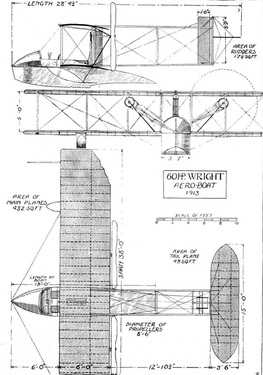 Happy New Year to all of our fellow aviation enthusiasts following Wright Seaplane Base, Inc.! Last week we traveled to Indianapolis and presented on the Wright Brothers’ early contributions to floatplane and flying boat technology. It never seizes to amaze me how these “Gentlemen Aviators,” influenced our modern American history and helped pave the way to our modern and ever-changing aviation industry. We all know of the famous December 17, 1903 flight where the Wright Brothers proved that humanity could indeed join the ranks with birds with their flying machine… But do you know of all the other contributions Orville and Wilbur gave to aviation? In all the Wrights, early influence on aviation history stirred many great innovations that contributed to our aviation and seaplane technology. Some early seaplane technologies such as retractable wheels, unique stepped floats, angle-of-attack gauges, automatic stabilizers and auxiliary engine starters proved to be remarkable advancements still employed today to enhance our aviation experience. Just as Orville and Wilbur dared to pursue their “impossible” dream, we too must push to inspire other young visionaries to do the same. After Wilbur’s passing to typhoid fever, Orville gave a young engineering student and graduate of Columbia University, Grover Loening, a chance to share his passion for Aeronautics. Under the direction of Orville, this newly minted Chief Engineer of the Wright Company, was given an opportunity to help Orville develop an effective design for a flying boat, the Wright Model G Aeroboat. The Model G Aeroboat was a deep-water flying boat design that could carry two people in tandem and meant for use by the U.S. Navy. The design was successfully tested many times off of the Great Miami River, South of Dayton, Ohio. It proved itself marketable as entrepreneurs attempted to open a floatplane school at the Glenwood Country Club in Glen Head, NY using the Wright Model G Aeroboat. Not unlike the Wright Brothers, many of our young minds today also possess an “impossible” dream. Just as Orville and Wilbur used their talent and passion for science, technology, engineering, and math to conquer flight; it is our duty to inspire such aspirations. We must enable the upcoming generation to explore and challenge the sciences to foster in the next wave of innovation! This is why Wright Seaplane Base, Inc. has added to their charter a commitment to facilitating opportunities for young innovators residing in our local community for 2015 and beyond! Continue to follow this blog for upcoming developments and other notes regarding the Wright Brothers and other significant events in aviation history! Feel free to contact us via our contact page or to this blog, if you have any questions and/or comments. If you would like to contribute to any of our 2015 goals click here or on the donate button. Thank you and Happy New Year from WSBI! J. L. Manresa 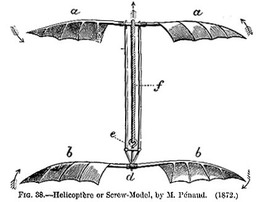 All About A Toy! As a child, did you ever receive a gift from your parent or a family member that had such an impact on you that as an adult, it shaped your way of thinking, dreaming and responding to the world? In 1878, Milton Wright was returning home from his work travels; Milton Wright was a Bishop for his local church and traveled extensively to preach. Upon returning home one evening the Bishop gave the brother’s a toy, this toy impacted their young lives appealing to their intellectual senses and curiosity. The toy was a simple gadget, a helicopter of sorts made of bamboo, paper, and cork made motorized by a rubber band. The helicopter, an engineering design of Alphonse Penaud of France, a French pioneer of aeronautical science who achieved remarkable headway in the field of aeronautics during the 1860s to 1870s. Penaud developed the Planophore, a mechanical device that used propellers, which were powered by rubber bands to sustain short periods of flight. This remarkable gadget, a loving gift from their father would credit the spark into the Wright brothers’ future aviation endeavors and history-making achievements. “Our first interest (in flight) began when we were children. Father brought home to us a small toy actuated by a rubber spring which would lift itself into the air. We built a number of copies of this toy, which flew successfully….But when we undertook to build the toy on a much larger scale it failed to work so well. The reason for this was not understood by us so we finally abandoned the experiments.” – Orville Wright It would take a little bit of time and discovery before the brothers’ reached the threshold that would carve their names in history. The journey of discovery that would include a Printing business and a Bicycle Shop! Remarkably each step along their path ultimately laid foundational learning and practices that lead them to achieve their aeronautical aspirations. The printing shop enriched the brothers’ mechanical, writing skills and business aptitudes. The business engagement from the printing shop fostered an environment that developed their engineering talent, documentation, protection of work and the promotion and sale of their airplane. In the business of their bicycle shop, the brothers’ combined their mechanical skills and engineering talents to build and brand their own line of bicycles. Beginning in 1896, the brothers’ developed and carried a line of three different bicycle models. Though Wilbur and Orville did not graduate from high school, it was the encouragement from both of their parents that fostered an environment to discover and acquire knowledge through hands-on engagement and responsibilities. Respectfully, they were self-taught engineers who loved to learn. And through their constant evolvement of organic studies as children at home and then through their business endeavors as young adults. Wilbur and Orville matured into highly intelligent individuals whose engineering labor and tireless efforts produced man's first powered flight, all because of a toy! L. Manresa #WrightBrothersDay is December 17th - What would they think?  The Wright Model "G" Aeroboat on the Miami River The Wright Model "G" Aeroboat on the Miami River THE BIG TREAT Billy Gearheart was milking the cows because his father had been called in by the volunteer fire departed to fight a barn fire. He didn’t mind milking Beulah because she was a gentle cow and Billy always fed the cows before milking them. But Bessie, she was mean, and always tried to kick over the mil bucket. He had tied her leg back and was pushing hard against her side with his head, but she still tried to kick the bucket. His cat, Tom, was watching him and asking fir a shot of milk, so ever so often, Billy would shoot a stream of milk into his open mouth. He finished the milking and turned the cows out into the barnyard. As he was carrying the two buckets of milk, Billy was thinking that two was his lucky number. He had two cows, he was carrying two buckets of milk, and he had two lucky charms, one in each pocket. His mother looked him up and down, as she combed his hair. “Your white shirt is still clean, your overalls look okay, and your shoes are still shined. You didn’t get any of the mess in the barn on your clothes. So, here are two quarters, your lunch is packed, there’s your treat for the teacher, and off to school you go.” She gave him a fast kiss, slapped him on the butt, and he was off to school. The children were running around the schoolyard and Billy joined in the fun and games. The teacher, Mrs. Press, rang the bell and they all went into the one room schoolhouse. After the children were in their assigned seats, the teacher said, “Let’s all stand up and recite the Pledge of Allegiance.” All the children stood and out their hand over their hearts and, in unison, recited the pledge. After they sat down Mrs. Press said, “Children, take out paper and pencil and write your name at the top. Then write the date as follows, August 20, 1914. Your homework will be to write about what you see and hear today. We will now assemble in the yard by two’s, little children first, then big children in the rear. Then we will march to the Miami River. Stay together, and stay behind the ropes that are strung out near the river.” The sun was shining, not a cloud in sight, and the cool night air was warming as the children marched to the river. They were all assembled behind the ropes at the edge if the river, talking, laughing, and giggling. They got quiet when a 1912 Ford came through the trees towing a boat hull, mounted on two bicycle wheels. The car was disconnected and drove back through the trees. Then a large flat bed truck came through the tress hauling a double winged structure with a long boom that has vertical and horizontal fixtures on the rear. The children were excited and made all kinds of comments: “It is a boat?” “Its got two big fan blades!” “I see a motor.” And “Gosh, them are long wings.” The load was removed and the truck left. The bicycle wheels were removed and the men put the two pieces together. The Model “G”Aeroboat was pushed out into the shallow part of the Miami River on the Miami Shores side. Then Orville Wright, wearing his hat backwards with goggles on forehead, climbed aboard and settled into the pilot’s seat. The co-pilot, a Navy Lieutenant, Kenneth Whiting, climbed aboard on the other side and settled in next to Orville. The men on the ground turned the two propellers over a few time and gave Orville the okay sign. The motor started and the props began to whirl. The children were really excited now and their comments increased: “Is it a flying boat?” “It’s like two large fans blowing air!” “Will it really fly? And “It is a flying boat!” The ground crew pushed the Aeroboat into deep water. The throttle was opened up and the Aeroboat sped down the river. Faster and Faster, the hull rose up on top of the water, and the “Flying Boat” was airborne. The children were amazed and could not take their eyes off the plane as it flew over the Miami Shores and all around to the upper part of the bend of the river. The teacher and children had turned a full circle as they watched the Model “G” Aeroboat fly in a large circle and make a turn to come down and land in the river. “Look, they are coming down to land in the river,” one of the children shouted. Sure enough, the plane was on an approach to land in the river. “Oh no! It’s falling into the river!” another child shouted. Something had broken and part of a wing fell off as the Aeroboat plunged into the Miami River. “Are they drowned?” “I see one head pop up.” There’s another one.” The children cheered as the pilot and co-pilot swam out of the river and waded ashore. Billy was happy as he played with his two lucky charms. He had taken two Gooseberry Crumbles to the teacher, they had marched in tow’s to the river, two men had flown a “Flying Boat” in a large circle, crashed into the river, survived, and now the two mules were being used to pull the wrecked plane out of the river. Two was certainly his lucky number and now he knew what he would write about today’s event for his homework. And he would have a lot to tell his mom and dad. Editor’s Note: This is a fictional account of events that happened in the bend of the Miami River in 1913 and 1914 as Orville Wright and his employees flew several versions of seaplanes in and out of the river over 100 times. Orville’s flight log details each flight including the one where the wing broke and plunged him and co-pilot into the river. Read about this history on a bronze plaque at the Miami & Erie Canal Park on Marina Drive, West Carrollton, as you look out to the bend of the river where is all happened. Moraine City Mayor Carl W. Gerhardt was thrilled, as a grade school student in 1914, when the teacher, Mrs. Madge Routsong Prass led the children to the river to watch Orville test his “Flying Boat” An article about this event was published by the Kettering-Moraine Museum and Historical Society. Mr. Gerhardt was mayor from 1970 to 1975. Guest Blogger: “The Big Treat” By D.L. Ferguson Author Of “Randolph The Six Gun Cowboy” Published In 1995 & “The Proud Leyte” Published In 1997.
|
Archives
May 2017
AuthorActive aviator with a passion to share all things aviation! Categories |
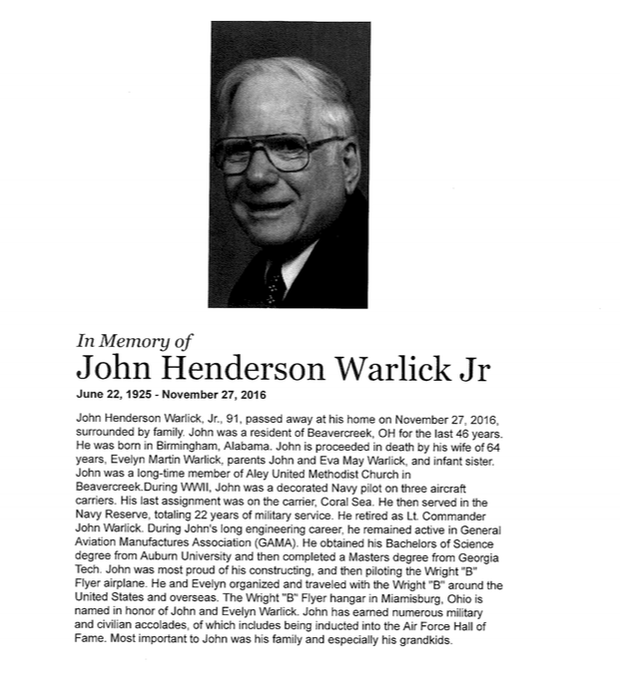


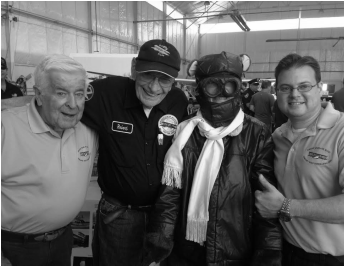
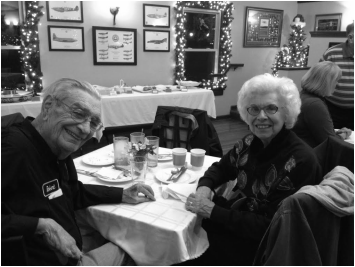
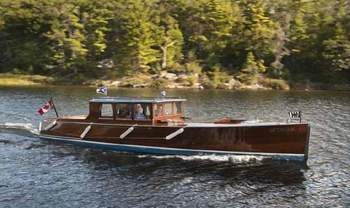


 RSS Feed
RSS Feed

